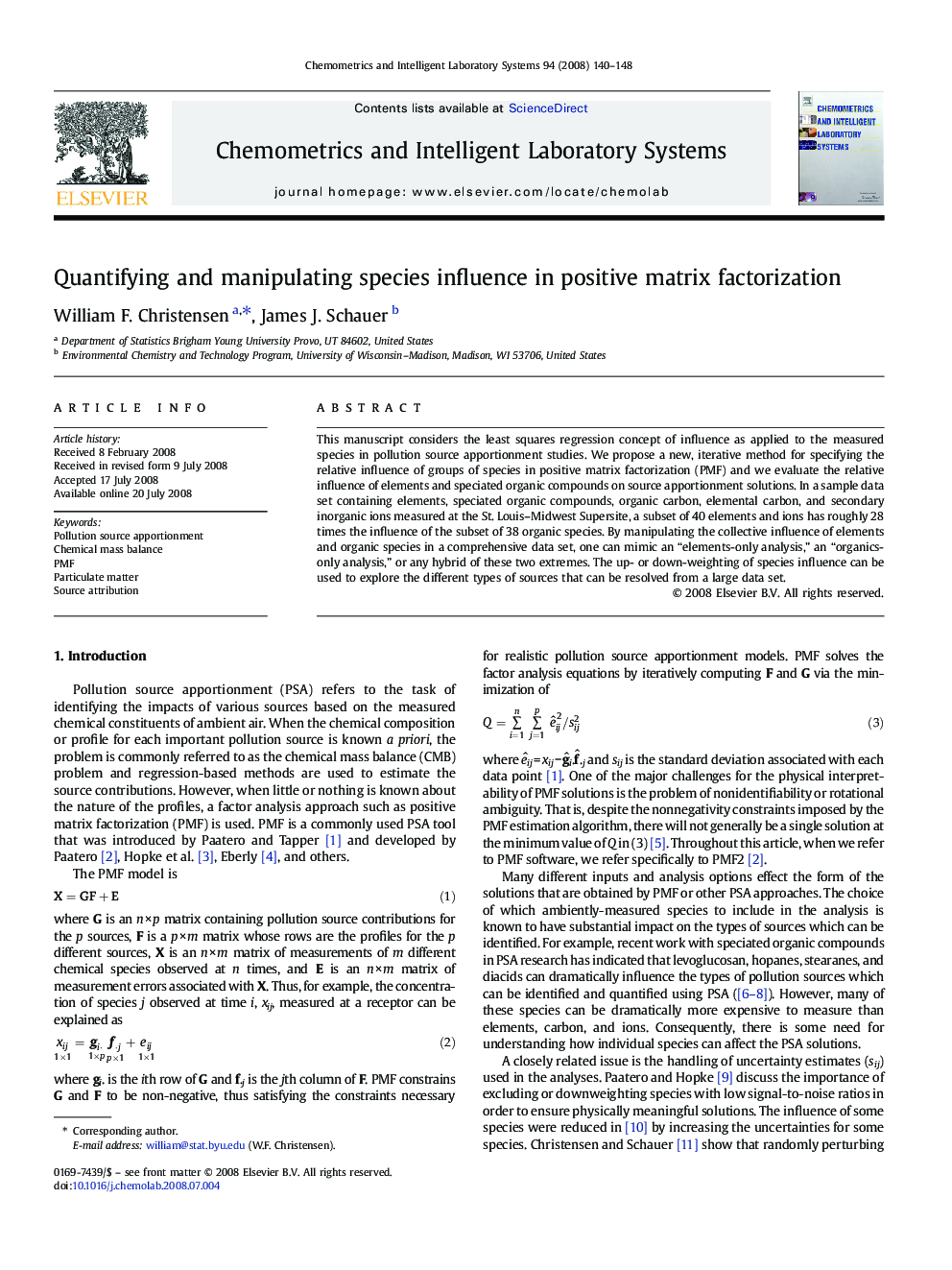| Article ID | Journal | Published Year | Pages | File Type |
|---|---|---|---|---|
| 1180354 | Chemometrics and Intelligent Laboratory Systems | 2008 | 9 Pages |
This manuscript considers the least squares regression concept of influence as applied to the measured species in pollution source apportionment studies. We propose a new, iterative method for specifying the relative influence of groups of species in positive matrix factorization (PMF) and we evaluate the relative influence of elements and speciated organic compounds on source apportionment solutions. In a sample data set containing elements, speciated organic compounds, organic carbon, elemental carbon, and secondary inorganic ions measured at the St. Louis–Midwest Supersite, a subset of 40 elements and ions has roughly 28 times the influence of the subset of 38 organic species. By manipulating the collective influence of elements and organic species in a comprehensive data set, one can mimic an “elements-only analysis,” an “organics-only analysis,” or any hybrid of these two extremes. The up- or down-weighting of species influence can be used to explore the different types of sources that can be resolved from a large data set.
